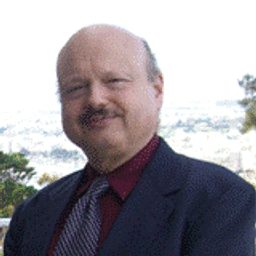
Édith Prégent
Since 2011, Édith Prégent actively particpates in the regional inventorial project of cultural and built heritage of the region of Vaudreuil-Soulanges (Our heritage at the heart of our identity) arising from an innovative agreement between the Vaudreuil-Soulanges MRC, the Musée régional de Vaudreuil-Soulanges and the Canada Research Chair on Urban Heritage, ESG-UQAM. She is also the Urban Summer School coordinator (2013-2015) developed in collaboration with the CRÉ du Haut-Saint-Laurent, the Musée régional de Vaudreuil-Soulanges and the Canada Research Chair on Urban Heritage, ESG-UQAM. Since 2015, she is also the coordinator of the “Churches Plan” of the Vallée Haut-Saint-Laurent, in partnership with the five regional MRCs and the diocese of Valleyfield. This two-year pilot project (2015-2017) involves over 86 churches.
***
Édith Prégent est détentrice d’une licence en droit civil de l’Université d’Ottawa, doctorante en histoire de l’art, sous la direction de Luc Noppen et la codirection de Lucie K. Morisset, et chercheure à la Chaire de recherche du Canada en patrimoine urbain (École des sciences de la gestion, Université du Québec à Montréal). Son champ de recherche porte sur la patrimonialisation des lieux de culte et plus particulièrement sur les objets religieux conservés in situ dans une approche privilégiant la valeur d’ensemble et le concept d’œuvre totale. Dans le cadre de ses recherches, elle est récipiendaire de la bourse Joseph-Armand Bombardier du Conseil de recherche en sciences humaines du Canada (CRSH). Membre étudiant du Centre interuniversitaire d’études sur les lettres, les arts et les traditions (CÉLAT), elle est également chargée de projets au Musée régional de Vaudreuil-Soulanges où elle s’occupe de la préservation et de la mise en valeur du patrimoine religieux de la région.
Depuis 2011, Édith Prégent participe activement au projet d’inventaire du patrimoine bâti et culturel de la région de Vaudreuil-Soulanges (Notre patrimoine au cœur de notre identité) issu d’une entente novatrice entre la MRC de Vaudreuil-Soulanges, le Musée régional de Vaudreuil-Soulanges et la Chaire de recherche du Canada en patrimoine urbain, ESG-UQAM. Elle est également la coordonnatrice de l’École d’été du patrimoine (2013-2015) réalisée en collaboration avec la CRÉ du Haut-Saint-Laurent, le Musée régional de Vaudreuil-Soulanges et la Chaire de recherche du Canada en patrimoine urbain, ESG-UQAM. Depuis 2015, elle est aussi coordonnatrice du « Plan églises » de la Vallée Haut-Saint-Laurent, en partenariat avec cinq MRC de cette région et le diocèse de Valleyfield. Ce projet pilote se déroule sur deux ans (2015-2017) et concerne plus de 86 églises.
Sessions auxquelles Édith Prégent participe
Lundi 6 Juin, 2016
__ Please note that this session is scheduled in a distant location from the main conference; transportation will be provided to registered participants. Bus pick-up is scheduled at 7:30 AM in front of the DS Building (320 Saint Catherine East street, on the UQAM site and will return for 7:00 PM at the same location. Please wear your badge. ___ Veuillez noter que cet atelier est à l'extérieur de Montréal. Les délégués qui se seront enregistrés seront transporté...
Sessions auxquelles Édith Prégent assiste
Vendredi 3 Juin, 2016
Welcome addresses and cocktail, followed by the Concordia Signature Event "The Garden of the Grey Nuns". As the opening ceremony and cocktail take place in the former Grey Nuns' Motherhouse, recycled into campus residence and reading rooms by Concordia University, delegates will also have the possibility to discover the video Three Grey Nuns (3 minutes, by Ron Rudin and Phil Lichti. Three Grey Nuns recount their memories of communal life in the Grey Nun’s Motherhouse. Built...
Samedi 4 Juin, 2016
What if we changed our views on heritage? And if heritage has already changed? While, on the global scene, states maintain their leading role in the mobilization of social and territorial histories, on the local scale, regions, neighbourhoods and parishes have changed. Citizens and communities too: they latch on to heritage to express an unprecedented range of belongings that no law seems to be able to take measures to contain, often to the discontent of...
Since the beginning of the 19th century religious buildings and artefacts of the West have been involved in a continuous process of musealization. In the time-period subsequent to the Second World War, the general forces of secularisation increasingly turned religious buildings, most of them churches, into heritage and substantial parts of Christian practices into history. On a global scale (Western), conservation and heritage practices have been applied on tangible and intangible expressions...
This festive event will offer delegates a taste of one of the iconic dishes of Montreal, the smoked meat sandwich, imported by Jewish immigration from Eastern Europe in the early 20th century. In particular, the tasting will allow a discovery of the products of the renowned international institution Schwartz's, the Hebrew Delicatessen for which Montrealers and tourists alike are willing to wait in long line-ups. During the tasting, “Chez Schwartz,” a documentary produced by Garry B...
Most of what we experience as heritage emerges into conscious recognition through a complex mixture of political and ideological filters, including nationalism. In these processes, through a variety of devices (museums, scholarly research, consumer reproduction, etc.), dualistic classifications articulate a powerful hierarchy of value and significance. In particular, the tangible-intangible pair, given legitimacy by such international bodies as UNESCO, reproduces a selective ordering of cul...
Dimanche 5 Juin, 2016
Lundi 6 Juin, 2016
__ Please note that this session is scheduled in a distant location from the main conference; transportation will be provided to registered participants. Bus pick-up is scheduled at 7:30 AM in front of the DS Building (320 Saint Catherine East street, on the UQAM site and will return for 7:00 PM at the same location. Please wear your badge. ___ Veuillez noter que cet atelier est à l'extérieur de Montréal. Les délégués qui se seront enregistrés seront transporté...
Mardi 7 Juin, 2016
While historical churches are being abandoned all over the Christian West, more and more places are growing the opposite way: pilgrimage sites are being enlarged and enhanced, whole urban districts are being developed with churches and temples boasting diverse, and often unorthodox, religious practices. Epistemologically linked to heritage, the sacred now seems to follow a path of its own, staging itself in new settings where the “religious heritage” refers mostly to common practices, however...
The closing dinner of the conference, called “Pawâ” according to a French-Canadian tradition borrowed from the Native American lexicon, will be an opportunity to discover, in the heart of the Old Port of Montreal, an original culinary creation by the caterer Agnus Dei, from the renowned Maison Cartier-Besson in Montreal, leader in its field for its boundless creativity and event expertise. The dinner, in the form of stations, will offer delegates an exploration of Quebecois culinary heritage,...
Mercredi 8 Juin, 2016
||| Les Mohawks constituent la nation amérindienne la plus nombreuse parmi les dix différentes nations que compte le Québec. La nation mohawk compte près de 17 350 habitants. Il y en a 2 700 qui vivent hors réserve et les autres sont dispersés dans trois grandes communautés que sont : Kanesatake, Akwasasne et Kahnawà :ke. Située à proximité de Montréal, sur la rive sud du fleuve Saint-Laurent, la communauté de Kahnawà :ke compte près de 7 300 habitants. Elle est parmi les première...





